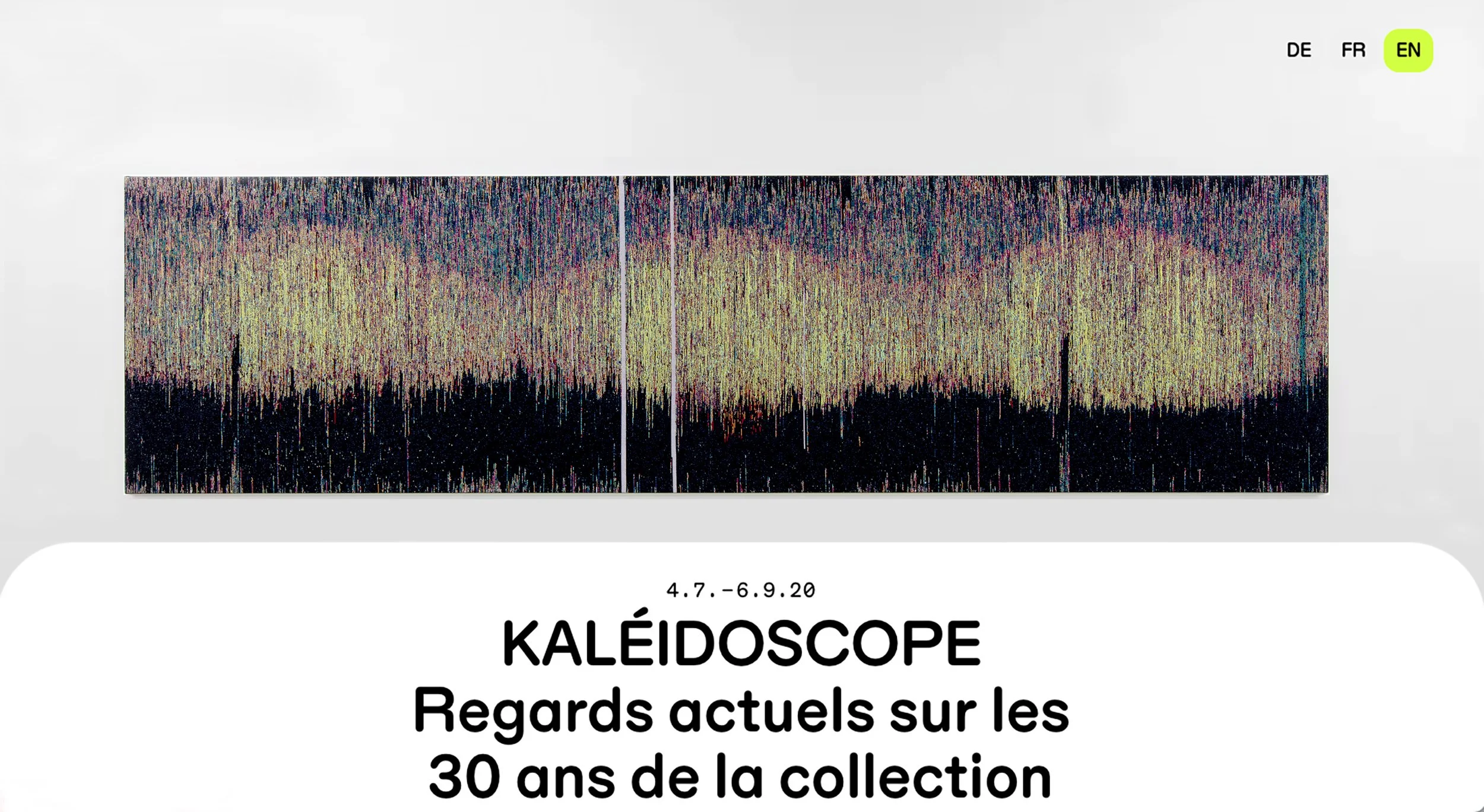KALÉIDOSCOPE
KBCB, Switzerland
July 4th - September 6th, 2020
Susan Morris, SunDial:NightWatch_Activity and Light 2010-2012 (Tilburg Version), 2014, Jacquard tapestry: Silk and linen yarns, 155 x 589cm, Stiftung Kunsthaus-Sammlung Pasquart. Photo: Stefan Rohner
KALÉIDOSCOPE: Current perspectives on the collection’s 30th anniversary.
Marking its 30th jubilee this year, the Kunsthaus looks back on 30 years of collecting activity. Oriented at the beginning towards regional art, the collection has focused for several years on works by international artists shown in an exhibition at the Kunsthaus. Today the Kunsthaus-Collection numbers over 1800 works.
Kaleidoscope means «seeing beautiful forms», but its play with forms goes beyond its meaning: the Kaleidoscope inspires us to reflect on other perspectives. It combines fragments in new forms and produces a multiplicity of different ways of seeing things that connect or recoil from each other. The exhibition presents new acquisitions, works that have rarely been seen as well as others that are familiar, series of works or individual pieces. The variety reflects the changing views of those protagonists who have helped mould the collection, but also the role of donations in defining new emphases. In this encounter between works there can emerge on the one hand relationships or correspondences; on the other hand, the individual pieces often have little in common. The testing of constellations and contemporary perspectives on the collection allow new contexts to emerge.
PUBLICITY/ANNOUNCEMENT-KALÉIDOSCOPE
Marking its 30th jubilee this year, the Kunsthaus looks back to 30 years of collecting activity, concentrating on highlights. Oriented at the beginning towards regional art, the Kunsthaus-Collection has focused for several years on works by international artists shown in an exhibition at the Kunsthaus. Today the collection numbers over 1800 works.
Kaleidoscope means «seeing beautiful forms», but its play with forms goes beyond its meaning: the Kaleidoscope inspires us to reflect on other perspectives. It combines fragments in new forms and produces a multiplicity of different ways of seeing things that connect or recoil from each other. The exhibition presents new acquisitions, works that have rarely been seen or are familiar, series of works or individual pieces. The variety reflects the changing views of those protagonists who have helped mould the collection, but also the role of donations in defining new emphases. In this encounter between works there can emerge on the one hand relationships or correspondences; on the other, the individual pieces often have little in common. The testing of constellations and contemporary perspectives on the collection allow new contexts to emerge.







